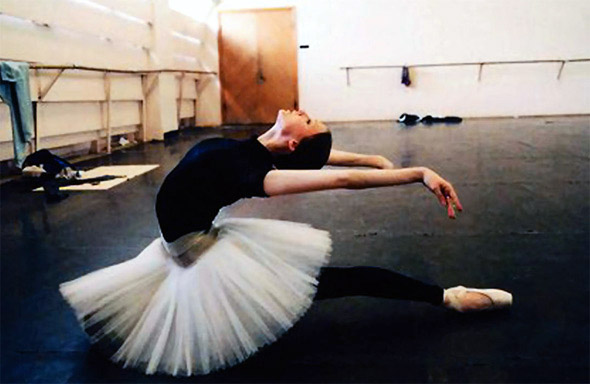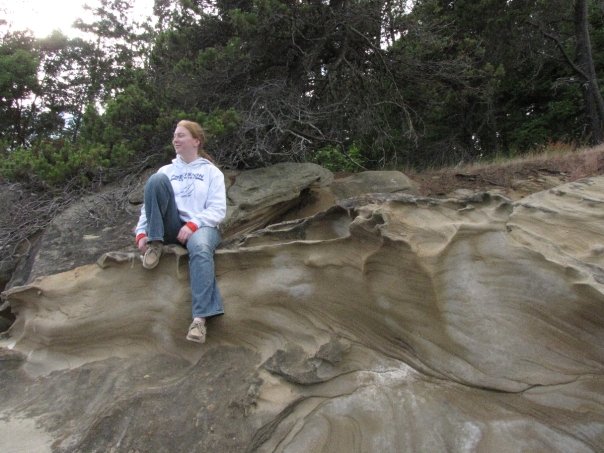My senior year of college, once winter was officially gone, one of my housemates or neighbors bought a backyard games set from Walmart on a whim. And that's how I spent half my senior year playing badminton. I'd played occasionally before, like you do as a kid because—let's face it—badminton has a certain amount of whimsy built-in. Elegant rackets like the wings of dragonflies! A winged ball! That's called a shuttlecock! That makes a very satisfying thunk when struck in the sweet spot!
We even held a tournament once, though our careful brackets and fabulous prizes quickly devolved into "take a sip of your beer when anybody scores" and "this ribbon says, 'I Can Dress Myself.'"
There is a very poorly taken photo of me from this time. I have a racket in my hand and am going in for a spike shot. I'm wearing a long-sleeved grey t-shirt and an ankle-length denim skirt that looks as though it was made from a single pair of jeans. (It was not, but such were the fashions of the day.)
And it turns out, this is perfectly in line with the new badminton dress code as described in the New York Times: female badminton players are now required to wear skirts.
Naturally, as the Times hurries to explain, this is being called out as a sexist move. An extra wrinkle is that badminton is played by lots of Muslim women, who currently play in long pants. Pants would still be permitted, but only if a skirt is worn over them. And not a sheer skirt.
The reason for the change? According to Badminton World Federation deputy president Paisan Rangsikitpho:
“Hardly anybody is watching,” he said. “TV ratings are down. We want to build them up to where they should be. They play quite well. We want them to look nicer on the court and have more marketing value for themselves. I’m surprised we got a lot of criticism.”
So, just to be clear: sports marketing value = skirts = harder to play in for religious or physical reasons = women have an extra obstacle to playing well in comparison with men. Way to sell me on the integrity of your sport, sir.
But don't worry! A woman is wiling to go on record and say this isn't sexist! We're in the clear! Former world champion Nora Perry: "Being a woman myself I do not think that the rules in any way discriminate against women."
I guess I missed the message from the Feminist Hive-Mind saying that being held to different standards because I am female is not actually discrimination. Possibly because, um, that is pretty much the textbook definition of discrimination.


